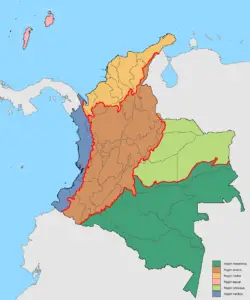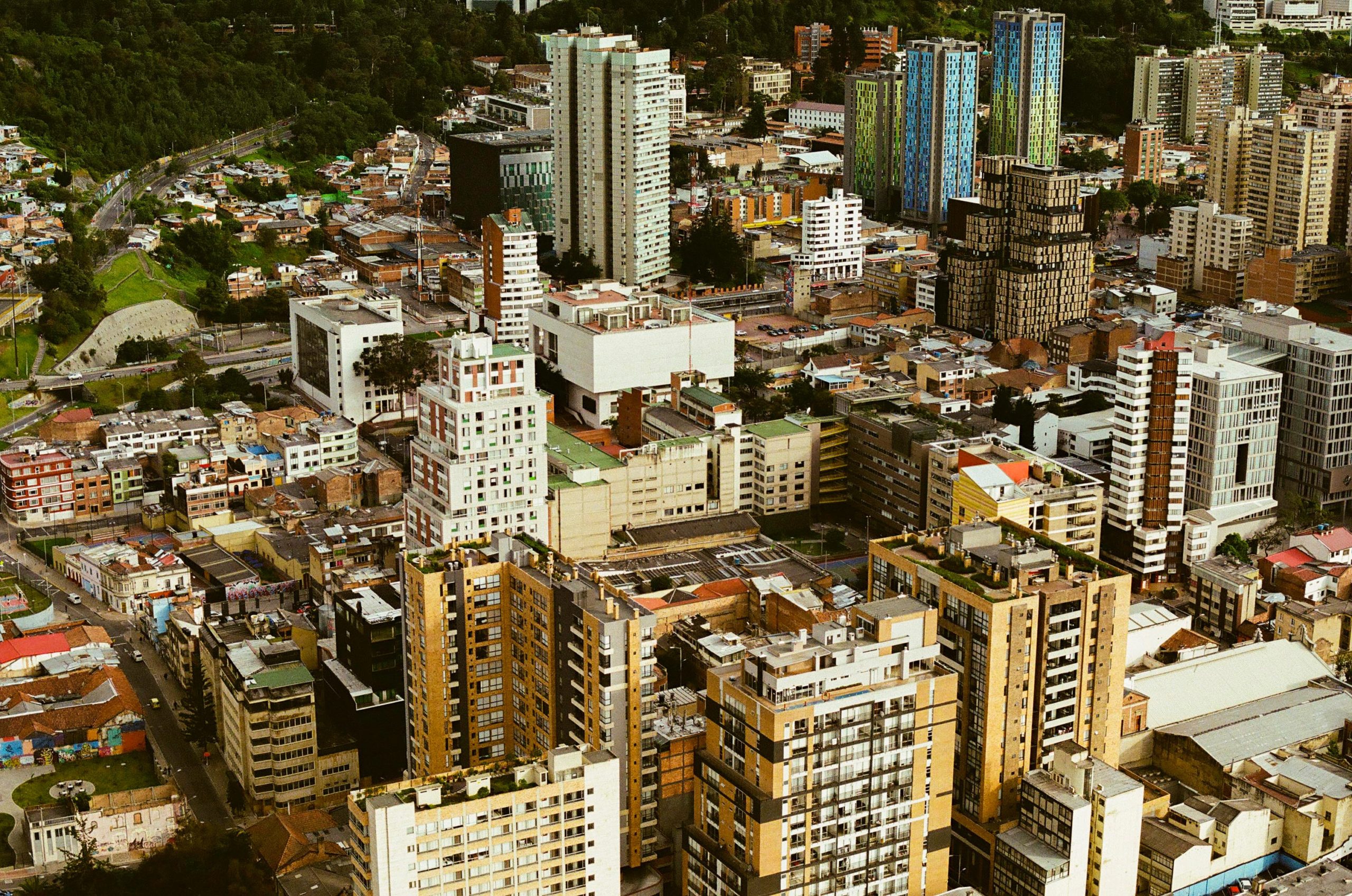Colombia-MICE is part of the Pelecanus Travel Group. We are located in Bogota, Colombia. We are specialized in corporate travel and all services around Meetings, Incentives, Conferences, and Exhibitions.
Colombia is one of the countries in Latin America with the best business environment. According to the World Bank’s Doing Business 2020 report, Colombia ranks third among the best business opportunity countries on the continent, after Chile and Mexico.
Over the past decade, Colombia has made efforts to improve its investment climate and as a result, foreign direct investment (FDI) into the country has evidently increased sharply. Considered by investors as a reliable and stable location, the country has several cities where trade plays the leading role and which offer opportunities for all domestic and foreign industries.
The Cities Competitiveness Index (ICC) conducted a 2020 study listing the country’s most competitive cities for business. Among them are Bogotá, Medellín, Cartagena, Barranquilla, Manizales, Bucaramanga and Villavicencio.
Below you will find information about trade in these cities, as well as the main commercial areas.
The Business in Bogota
Bogotá, the capital of Colombia, is the country’s most important city, and one of the most competitive cities in Latin America.
The great attraction for this city lies in the great investment opportunities. Today there are more than 1,300 foreign-invested companies, it has been cataloged as one of the Cities of the Future and holds second place in fDi Magazine’s (2021 – 2022) ranking of Cities of the Future in Latin America.
Most of the industries in Bogotá are textiles, clothing, leather, rubber and plastics, printing, chemicals, food, beverages, tobacco, wood, machinery and equipment, and metallurgy products, to name a few.
Also, the country’s largest city has a variety of shopping options, which you can find below.
Business district in Bogota
Bogota is the cradle of commerce in the country and in this great city you will find numerous opportunities of sectors and shops of all kinds of industries.
There are also several multinational companies and supermarkets in the city, such as Almacenes Éxito, Carulla, Alkosto, Olímpica, Homecenter, Makro, Cafam and others.
Center of Bogota
You can find everything in this area. The main attractions include the Historical Center, the International Center of Bogota and Carrera Séptima (between 12th Street and 19th Street).
Here you will find mainly
- clothing stores
- jewelry stores
- Specialized bookstores
- Hotels
- banks
- exchange offices
- travel agencies
- music stores
- cigar shops
- restaurants and cafes
International Center Bogotá
The International Center of Bogota (CIB) is an area of downtown Bogota that is home to several of Colombia’s tallest skyscrapers, mostly made up of offices and close to several plazas and pedestrian streets. This sector has evolved to become the city’s premier financial sector.
Chapinero in Bogota
in Chapinero, mainly along with the city’s Carrera 13. According to the Bogotá Chamber of Commerce, Chapinero is the district with the second-highest number of businesses in the city (26,196), representing 10.8% of the total number of registered businesses.
The north of Bogotá
The north of the city of Bogotá hosts a large number of the most important commercial establishments, shopping malls, hypermarkets and department stores. There are a variety of boutiques, jewelry stores, antique shops and currency exchange offices.
In the Zona Rosa, around Calle 82, you will find art galleries, department stores and luxury shops with the best national and international brands.
Usaquén sector shops are selling woolen fabrics, antiques and curios. There are several streets such as 109 and 116 and Avenida 19 that offer a wide range of commercial activities.
On the weekends there is also the Mercado de las Pulgas, where Colombian artisans are represented.
Shopping centers in Bogota
- Urban area: Centro Chía, Fontanar, El Trébol ( Mosquera), Metrosur, Gran Plaza Soacha, Mercurio.
- City center: Terraza Pasteur, Mallplaza NQS, El Gran San, Neos center.
- North: Unicentro, Palatino, Atlantis Plaza, Andino, El Retiro, Santa Ana, Avenida Chile, Hacienda Santa Bárbara, Santafé, Unilago.
- West: Portal of the 80, Cafam Forest, Poplars Diverplaza, Gran Estación, Salitre Plaza, Galerías, Titán Plaza, El Eden, Hayuelos, Plaza Claro, Nuestro Bogotá, Metropolis.
- Northwest: Bulevar Nice, Paseo San Rafael, Iserra 100, Centro Suba, Subazar, Plaza Imperial.
- South: Multiplaza Bogotá, Plaza de Las Americas, Ciudad Tunal, Tintal Plaza, Centro Mayor, Plaza Central.
Chamber of Commerce of Bogotá
The Bogota Chamber of Commerce is the main ally of entrepreneurs and businessmen in creating successful businesses.
The Chamber supports companies in their various life cycles by offering them legal certainty and developing measures to improve the competitive environment.
Commercial in Medellin
The City of Eternal Spring is one of the most competitive business cities in the country. The industries with the greatest participation and relevance in the greater Medellín area are textiles, chemicals, food, beverages, metalworking, electrical engineering and electronics.
There are many national and international companies of global competitiveness that are based in this city and promote the economic development of the city. A clear example of this is that Medellín is the headquarters of the largest electricity transmission company in Latin America and the city controls the general electricity system of the country thanks to its cutting-edge technology in this sector and its optimal functioning.
The Business district of Medellin
The city of Medellín offers a wide range of shopping opportunities, most of which are focused on the city’s main activity, fashion. Still, there are two areas to consider:
Laureles in Medellin
This district of Medellín is one of the main reference points of the city, not only for its history and tradition, but also for its gastronomic offer and its commercial activities.
Laureles consists of the Avenidas Nutibara , Jardín , Calle 33, Carrera 76 and Carrera 70 and is today an important axis for trade and services. Here you will find major shopping malls and chain stores including Éxito, Jumbo, Carulla, Euro and Makro.
With a traditional French style and lots of green space, you’ll also find a variety of restaurants, specialty shops, banks and more. Many houses and buildings still have their original facades and structures.
El Poblado of Medellin
This sector is one of the most recognized in the country for its location in the most exclusive area of Medellin, with the best infrastructure for high-end housing and luxury shops. It is also the safest area, with large shopping malls, brand shops, the best hotels in Medellín, all kinds of restaurants and the most exclusive bars and business centers nearby.
In recent years, business activity in Medellín has been concentrated in El Poblado as this is the cradle of the city’s economy and business development. Why is that? In this sector, there is the Golden Mile, which brings together the most important and diverse business centers of the capital of Antioquia, of which the financial sector is the most important.
El Poblado is strategically located in the Aburrá Valley and is served by major avenues such as Av. El Poblad , the Av . Las Vegas, Calle 10 and Av. Crosses regionally as well as the upper, middle and lower cross streets.
In addition, in Medellín and the Aburra Valley there are more than 40 industrial parks such as La Regional Industrial and Warehouse Park in Sabaneta or ZOFIVA (Free Trade Zone in Caldas) and more than 10 industrial zones such as Barrio Colombia, Belén, Guayabal and others.
Shopping centers in Medellin
These are 14 of the biggest and best malls in Medellín:
- City Center: Mayorca, Arkadia, Premium Plaza, El Parque, Viva Envigado
- North: Terminal del Norte, Unicentro, Los Molinos, Puerta del Norte
- West: Obelisco, Viva Laureles
- East: National Palace
- South: El Tesoro, San Diego
Chamber of Commerce of Medellin
The Medellín Chamber of Commerce is a leading body in the Antioquia region that offers business services advice and manages the commercial registers of companies and corporations incorporated in the department.
This organization promotes economic growth in the city, and competitiveness also improves the quality of life of citizens and entrepreneurs by understanding their needs and therefore has developed a wide range of services.
Some of the most important services are
- Business training
- The Godfather Plan
- Center for Mediation, Arbitration and Amicable Settlement
- Digital Certification Services
- Subsidiaries in Trayectoria Mega
Commercial in Cartagena
Cartagena de Indias not only has a wonderful natural wealth, an incredible gastronomic offer, or important hotel infrastructures but also has a solid economy thanks to sectors such as industry, tourism, commerce and logistics for international maritime trade due to its strategic location on the Caribbean Sea, in the north of South America and the center of the American continent.
The Business district in Cartagena
In the city of Cartagena, you will find several industrial and commercial areas, because Cartagena is the largest economic metropolis on the Colombian coast.
One of the most important sectors of the city is Bocagrande, the city’s most modern area with luxurious hotels as well as numerous restaurants, discos and casinos that make this area a popular tourist area.
However, in the list below you will also find other areas that are more trade-oriented.
La Matuna in Cartagena
The Matuna sector has gradually become the financial, commercial and business center of the city and includes industries such as tourism, international trade, education and transport, among others.
In this area there are countless colorful hostels, bars and restaurants with excellent typical Cartagena cuisine.
La Matuna, which was built precisely on one of the places where part of the wall was cut, divides the historic center of Cartagena in two: on one side there is Avenida Venezuela and the neighborhood of San Diego. On the other side are Avenida Daniel Lemaitre and the Getsemaní neighborhood. The strategic location makes it easy for visitors to explore the city and reach the main attractions.
Cartagena Industrial Park
Most of the city’s industries are located in the Mamonal Industrial Park, considered one of Colombia’s most important industrial areas.
It is home to around 209 large and medium-sized companies and the El Bosque industrial zone, which houses the city’s main free trade zones.
Free Trade Zones in Cartagena
- La Candelaria Free Trade Zone
- Central Park Free Zone
- Industrial Free Trade Zone for Goods and Services Cartagena Zofranca SA
- Tourist Free Trade Zone
- Uniempresarial de la Refinería de Cartagena Free Zone
- Argos SA Permanent Special Free Trade Zone
- Permanent Special Free Zone Puerta de Las Americas
Shopping centers in Cartagena
The main shopping centers in Cartagena include the following:
- Bocagrande Plaza
- La Serrezuela
- Plaza el Castillo Shopping Center
- Caribbean Plaza
- Nao shopping mall
Chamber of Commerce of Cartagena
The Cartagena Chamber of Commerce is a private, not-for-profit organization whose main objective is to serve as the body of the general interests of commerce vis-à-vis the government and the traders themselves and to promote regional development.
This entity is authorized by law to provide mediation, arbitration and dispute resolution services. In addition, as part of its general services, it offers advice, administration and processing in the formation of companies.
For more information about the Cartagena Chamber of Commerce and its services, please click here.
Commercial in Barranquilla
Barranquilla is a major industrial and commercial center, with major economies including industry, commerce, finance, services and fishing.
Major products manufactured in Barranquilla include: oils, pharmaceuticals, chemicals, shoes, bus bodies, dairy products, cured meats, beverages, soaps, building materials, furniture, plastics, cement, metal-mechanical parts, clothing and boats, to name but a few to name a few.
According to the National Statistics Office (DANE), in 2019 Barranquilla was a major player in the Colombian economy, contributing 17% to the growth of the national industry, being the city with the highest increase in real retail sales and an increase of 66, 6% and 37.4% respectively in exports from its La Cayena and ZF Barranquilla permanent free zones.
The Business district of Barranquilla
The city of Barranquilla is divided into 5 localities: Riomar , Norte-Centro Histórico , Sur Occidente , Metropolitana and Sur Oriente . There are between 24 and 40 districts in these places and each of these places has a strong presence of both retail and wholesale.
These are 3 of the sectors where the city’s commerce is most concentrated:
Paseo de Bolivar in Barranquilla
Paseo de Bolívar is the main avenue in Barranquilla. A large part of the city grew and expanded around this avenue.
Located in the historic center of the city, this neighborhood is home to the City Hall, the Church of San Nicolás, and numerous commercial and financial buildings. There is a lot of trade and commerce of all kinds in the streets as well as in the big shops and shopping centers.
It is a very busy sector and since 2021 a relocation process has been initiated for more than 100 sellers who will move from the public space of Paseo Bolivar to the Robertico and Volpe shopping centers. An excellent alternative to free up public space in this area, improve pedestrian traffic and encourage formal commerce.
Riomar in Barranquilla
Riomar is a very exclusive area. Although residential use predominates in this part of the city, there are also other uses such as industry, institutions, tourism and commerce. Here you will find several 4 and 5-star hotel chains, several shopping malls, bars and restaurants. It is considered an ideal place for shopping as the latest trends in various industries, especially coastal fashion, can be found here.
El Gulf Barranquilla
Located to the north of the city, Barranquilla Golf is brimming with luxury and tranquility.
In this area, which hosts the most exclusive neighborhoods for its infrastructure and location, there are residential developments, modern high-rise buildings and skyscrapers such as the Grattacielo and the Mirage 5, as well as numerous drugstores, clothing stores, gyms, restaurants, hotels, supermarkets and the main shopping and financial centers of the city.
Shopping malls in Barranquilla
- Riomar – North: Viva Barranquilla, Buenavista, Villa Country, Único Outlet, Miramar, Villa Carolina, Gran Boulevard, Country Plaza.
- Historical Center: Portal del Prado, Commercial Shopping Center, Aladino, Tropical Centro, Parque Central.
- Southwest: Americano
- Southeast: Panorama, Alegra
- Others: Metropolitano, Metrocentro, Gran Plaza del Sol, Carnaval
Barranquilla Chamber of Commerce
Focused on merchant needs, the Barranquilla Chamber of Commerce is a leader in fostering prosperity and competitiveness by activating flows of information, capital and knowledge that impact the region.
The company has excellent Headquarters and Service Points in Barranquilla, Soledad and Sabanalarga where the services are delivered with technical support and efficient and trained staff.
For more information about the Barranquilla Chamber of Commerce and its services, please click here.
Commercial in Manizales
The city of Manizales is the capital of the department of Caldas, which is located in west-central Colombia in the Central Cordillera.
Doing Business Colombia 2010 study conducted by the World Bank, Manizales ranked first. Manizales is considered the city in Colombia where it is easiest to start a business. Today, the city continues to position itself as one of the strongest industrial and commercial cities in the country.
The main activity and tradition of the city is the cultivation and production of coffee, but there are also many companies dedicated to the production of spirits, shoes, rubber, chocolate, car parts, household appliances, soap, metallurgy and other products.
In addition, thanks to the natural wealth and the large number of forests and nature reserves that surround the city, bird watching has become an important point of reference, giving a great boost to tourism and the economy.
Shopping in Manizales
In this Colombian city, also known as the City of Open Doors, these two areas are mainly commercial:
Zona Rosa de Manizales
East Manizales is home to the Zona Rosa, home to some of the city’s most elegant neighborhoods. The Zona Rosa is today an area dedicated to gastronomy, entertainment and commerce, in particular the shops of the most luxurious brands in the city and country, as well as the main shopping centers. In addition, a large part of the quality hotel offer in the capital of Caldas is concentrated in this sector.
This is also the closest area to La Nubia Airport, which is convenient for travelers to access and thanks to its excellent location, and easy access to the bus and taxi system.
The Historical center of Manizales
While the city center is the busiest part of Manizales, it is also the main area for cultural, commercial and administrative activity.
Around 20% of the city’s economic activity is concentrated in this sector alone, where the best of the city’s history meets growing trade.
In the center and its surroundings, two zones can be distinguished in which trade plays the main role:
- The upper zone made up of the neighborhoods of Los Agustinos, Las Américas and the west end of the center, is densely populated and has moderate economic activity, with about 50 establishments per thousand inhabitants.
- In the middle zone, which includes the entire Centro district and is home to around 20% of the city’s private economic activity, there are just over 400 businesses per thousand inhabitants.
- This neighborhood of Manizales is dominated by shopping malls, car companies, restaurants, clothing stores, drugstores, pharmacies, banks, currency exchange offices, and technology stores.
Shopping centers in Manizales
- Mallplaza Manizales
- Fundadores Shopping Center
- Cable Plaza shopping mall
- Caldas Park shopping center
- Shopping center La 19
- Shopping center Sancario
- Multicentre Estrella
Chamber of Commerce of Manizales
The Manizales Chamber of Commerce aims to be the best partner for entrepreneurs in the region. In fulfillment of the tasks entrusted by the state, this organization works to create economic value in the region and supports the strengthening and growth of traders.
Their key business development services and actions include:
- Attention in communities: training, business clinic, vender Más program, etc
- Strengthening the economy: training courses, sectoral programs to strengthen the economy, advice, etc
- clusters and productivity
- business growth
- internationalization
Commercial in Villavicencio
Villavicencio is a Colombian municipality, capital of the Meta department and the most important commercial center of the Eastern Plain. Agriculture, livestock and mining are the pillars of the city’s economy, which has developed greatly thanks to significant and constant trade and good financial backing. Villavicencio is an important storage center and transit point inland for most of the crops and livestock produced in the Llanos region.
In addition, in Villavicencio, as the place is traditionally called, and in the surrounding area, there is a significant rice processing industry, palm oil and concentrate production, seeds and metalworking industry.
Business district in Villavicencio
In Villavicencio, the departmental capital, there are some facilities of great importance for economic and commercial development. Some of them are: the seat of government of the Department of Meta, the Water and Sewerage Company of Villavicencio (EAAV), the company Electrificadora Del Meta (EMSA), the branch of the Bank of the Republic of Colombia and the Chamber of Commerce of Villavicencio (CCV).
Villavicencio city center
Villavicencio city center includes the entire central area of the city around the Parque de Los Fundadores. In this area, you will find the main and widest shopping streets of Villavicencio, as well as numerous restaurants and hotels of all kinds.
South area of the center of Villavicencio
Around Calle 27, to the south of the city center, is this neighborhood considered one of the safest and most luxurious in Villavicencio. The main features that make this sector one of the most important in terms of commerce include a wide range of typical Llanos gastronomy, the best range of hotels and a large number of shopping centers.
Shopping centers in Villavicencio
The town of Villavicencio has many shopping centers. The most important include:
- Llanocentro Shopping Center: This is where the Grand Hotel is located
- Unicentro shopping center
- Viva Villavicencio Shopping Center (formerly La Sabana Shopping Center )
- Villacentro shopping center
- Único shopping center
- Primavera Shopping Center Urbana
In and around these malls across the city, you can find supermarkets and businesses such as Falabella, Homecenter, Constructor, Exito Supermarkets, Makro, Alkosto, Tiendas Metro and Olímpica.
Chamber of Commerce Villavicencio
The Chamber of Commerce of Villavicencio is the most important chamber of commerce in the Meta department. This facility promotes corporate governance, alternative methods of conflict resolution, and public records in the jurisdiction. It should also contribute to the development and growth of companies in the region.
One of their most important services is business orientation. It also offers virtual company databases and the possibility of renting space, equipment and complimentary services.
For more information about the Villavicencio Chamber of Commerce and its services, please click here.










